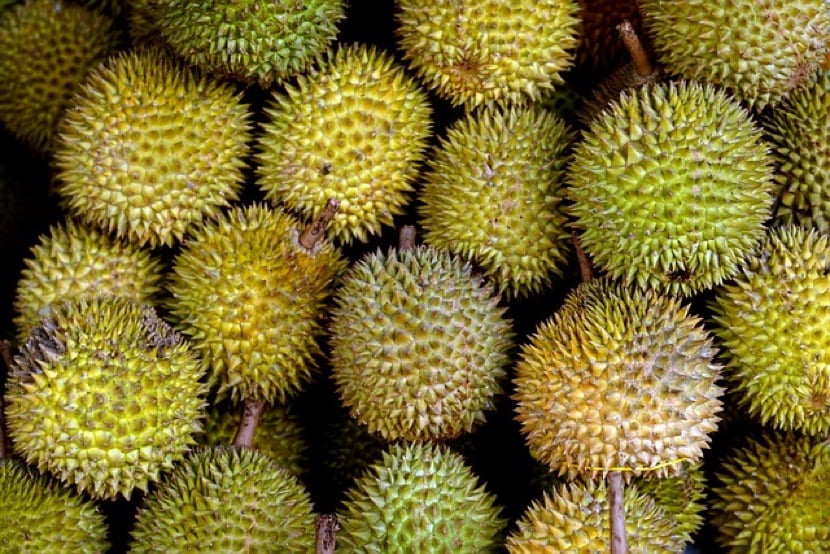Durian, scientifically classified under the genus Durio, stands out as one of the most unique and polarising tropical fruits. Native to Southeast Asia, it has earned the moniker “king of fruits” not only for its sizable stature but also for its distinctive features and robust flavours.

The physical appearance of durian is characterised by a large, spiky husk, ranging in color from green to brown. Covered in sharp thorns, this outer layer protects the prized edible flesh contained within. The fruit’s interior is segmented, each section housing creamy, custard-like flesh surrounding large seeds.
One of the most notable aspects of durian is its strong and pervasive odour. Descriptions of the aroma vary, with some finding it pleasantly sweet and others associating it with pungent notes reminiscent of onions or garlic. The powerful fragrance has led to the fruit being banned in certain public spaces, such as hotels and public transportation, in regions where it is prevalent.

The flavour profile of durian is as complex as its aroma. Its taste is often described as a harmonious blend of sweet and savoury, with a texture that can be creamy and rich. While durian can be enjoyed in its natural state, its versatility extends to culinary applications, where it is used in the creation of ice creams, pastries, and various savoury dishes.
Culturally, durian holds significant importance in many Southeast Asian communities. It is often celebrated during its peak season, and durian festivals showcase the diversity and richness of this revered fruit. The act of consuming durian is not merely a gustatory experience; it is a cultural phenomenon that reflects the deep connection between people and their environment.

Despite its divisive nature, with enthusiasts celebrating its unique taste and detractors put off by its strong aroma, durian remains an iconic and cherished fruit in the regions where it thrives. Whether you savour its complex flavours or approach it with caution, the king of fruits continues to be an intriguing and culturally significant culinary delight.
Eating durian can offer various health benefits, as the fruit is nutrient-rich and contains several compounds that contribute to overall well-being. Here are some potential benefits of consuming durian:

- Nutrient Dense: Durian is a good source of essential nutrients, including vitamins and minerals. It contains vitamin C, potassium, dietary fiber, and smaller amounts of other vitamins like B1 (thiamine), B2 (riboflavin), and B3 (niacin).
- Rich in Antioxidants: Durian is packed with antioxidants, including flavonoids, carotenoids, and polyphenols. Antioxidants help neutralize free radicals in the body, which can contribute to overall health and potentially reduce the risk of chronic diseases.
- Energy Boost: The fruit is a good source of carbohydrates, providing a quick and sustained energy boost. The natural sugars in durian can be beneficial for individuals looking for a natural energy source.
- Heart Health: Potassium is essential for heart health, and durian is a potassium-rich fruit. Adequate potassium intake helps maintain healthy blood pressure levels and supports cardiovascular function.
- Phytonutrients: Durian contains various phytonutrients, which are bioactive compounds that may have health-promoting effects. These compounds contribute to the fruit’s unique taste and aroma.
- Mood Enhancement: Durian contains tryptophan, an amino acid that is a precursor to serotonin, a neurotransmitter associated with mood regulation. Some individuals report experiencing mood-enhancing effects after consuming durian.

As with any dietary choices, individual responses can vary, and it’s advisable to consult with a healthcare professional or nutritionist for personalised advice, especially if there are existing health conditions or concerns.
To check on Every Day Fruit Series, please click on below :
Apple, Durian, Pineapple, Orange
Share us your favourite Every Day Fruit 😉

[…] Durian, Pineapple, […]
[…] https://mosspedia.live/learn-a-new-fruit-every-day-orange/ Learn a New Fruit Every Day – Introducing Durian https://mosspedia.live/learn-a-new-fruit-every-day-introducing-durian/ Learn a New Fruit Every Day […]